Finding the best angle for your solar panels is crucial to generate maximum power during peak sunlight hours. However, in order to find the best angle for solar panels, you must have a basic understanding of the sun's changing position.
As kids, we were taught the sun rises in the east, reaches its highest at noon, and sets in the west. That means the sun follows a simple path every day. However, that's not the case, as the sun's movement throughout the day is a little complex.
Due to the Earth's elliptical orbit and natural tilt around the sun, the sun moves differently depending on the season, where you live, and the time of the year. The portable Jackery SolarSaga Solar Panels feature adjustable kickstands that help you adjust the panels to generate maximum energy.
In this guide, we will reveal everything related to solar panel angle and how to calculate it for your location.
What Is The Best Angle For Solar Panels
The vertical tilt of the solar system is known as the solar panel angle. In other words, it is the cardinal direction the panel is facing: north, east, west, or south.
The primary aim of placing solar panels at the right angle is to ensure the sun's energy spreads over a larger area. For instance, if the sunlight covers 1 sq. meter of the solar panel surface at 90°, the same rays will spread over 1.5 sq. meters when tilted at 45°.

As a general rule of thumb, the best solar panel angle is the latitude of your home. For instance, if you live in Portland, Oregon, with a latitude of 45.5152° N, the solar panel angle should be 45°.
Since the sun's position changes throughout the day, the optimal tilt angle changes too.
Why Solar Panel Angle Matter
Photovoltaic solar cells work by absorbing the sun's rays to create electrical energy, which is converted into electricity. The process of solar-to-electric conversion starts when solar panels collect solar radiation. This is where the role of proper orientation comes into the picture.
In general, the solar panels should be titled where the direct sunlight hits them for long hours during the day. If you live in the US, you can achieve this by ensuring the solar panels face the equator and have an angle between 30-45° relative to the horizon.
- Solar panels should face south for those who live in the Northern hemisphere.
- Alternatively, they should face north for those who live in the Southern hemisphere.
When you tilt the angle such that they receive the greatest amount of sunlight, you can produce maximum electricity.
The table below details the average estimated output power for a solar panel array when you tilt it at some angle.
|
Tilt Angle (in degrees) |
Percentage increase in production — Southern USA |
Percentage increase in production – Northern USA |
|
Flat |
Assume 100 comparisons only |
|
|
10 |
108 - 8% increase |
109 - 9% increase |
|
20 |
113 - 13% increase |
115 - 15% increase |
|
30 |
115 - 15% increase |
118 - 18% increase |
|
40 |
114 - 14% increase |
117 - 17% increase |
|
50 |
110 - 10% increase |
116 - 16% increase |
The Solar Panel Angle For Your Latitude
The tilt angle increases with respect to latitude — the further your home is from the equator, the higher the tilt angle should be. For instance, if the state is located at a lower latitude, the PV panels should be placed at a downward tilt to capture direct sunlight.
Adjusting the tilt angle every time can be challenging. Therefore, the best angle for a solar panel equals your latitude. For example, if you live in San Diego, where the latitude is 32.7157°N, you can set your solar panels at 33° and leave them untouched.
Note: One important thing to consider is altering the tilt angle depending on wintertime or summertime output. If you run AC for long hours in summer, you can set your solar panels to improve solar production in summer.
If you want to lean toward more production in the summer season, try to tilt the solar panels at your latitude minus 10-15°. On the contrary, to generate more output in the winter, tilt panels at your latitude and add 10-15°.
The Solar Panel Angle For Each Season
The optimal solar panel angle changes based on different latitudes and seasons. This is because the sun is lower in the sky during winter and high during summer. Adjusting the solar panels a few times per year will help you produce maximum energy. Here are the general guidelines that can help you during solar panel orientation.
- Spring and Fall: Tilt the solar panels to your latitude.
- Summer: Tilt the solar panels to your latitude minus 15°.
- Winter: Tilt the solar panels to your latitude plus 15°.
To help you understand better, here is the table that shows the best solar panel angle for various states in the US during different seasons.
|
State |
City |
Winter |
Summer |
Spring/Fall |
|
California |
LA |
32° |
80° |
56° |
|
New York |
New York City |
26° |
72° |
49° |
|
Arizona |
Tucson |
34° |
82° |
58° |
|
Florida |
Miami |
40° |
88° |
64° |
|
Texas |
Dallas |
34° |
80° |
57° |
|
New Jersey |
Atlantic City |
28° |
74° |
51° |
|
Connecticut |
Greenwich |
26° |
72° |
49° |
|
Virginia |
Richmond |
30° |
76° |
53° |
|
Michigan |
Redford |
24° |
72° |
48° |
What Is The Best Direction For Solar Panels
Solar panel orientation, or azimuth angle, represents the horizontal orientation of the solar panels in relation to the equator. For the best results, it's important to face the solar panels towards the equator.
As mentioned earlier, tilt your solar panels to the south if you live in the Northern hemisphere and vice versa. In this section, we will help you understand why solar panel direction is important and what is the best direction for your location.

Why Solar Panel Direction Matters
Now that you know what solar panel direction is, it's time to understand the reasons why it matters.
Sunlight Angle
As the sun's position in the sky keeps on changing throughout the day, it should be positioned to receive maximum sunlight during the peak sun hours. Adjusting the solar panels in the right direction will help you convert more sunlight into electricity, depending on your location on the Earth.
Panel Efficiency
Solar panels operate efficiently when they are facing the sun directly. The higher the efficiency of solar panels, the more energy output is.
Climatic Factors
Severe weather conditions such as humidity, cloud cover, and pollution can affect the amount of sunlight that solar panels receive. By adjusting the direction of the solar panels, it's possible to offset these factors to a large extent. Thus, it will help solar panels receive maximum sunlight to recharge the battery.
In short, the direction of the solar panel must be oriented towards the sun's direction and tilted at an angle based on the latitude of your location, seasonal variation, etc.
The Solar Panel Direction For Your Location
Let's suppose you live in the United States. In this case, you should point your solar panels toward the true South or magnetic South. One important thing to remember is compass reading is not entirely accurate. This is because Earth's magnetic forces pull the compass needle away from the true North or true South. You can witness a decline of around 25° in the compass reading, depending on your location.
The difference between magnetic South and true South is called magnetic declination. This measures how many degrees you must compensate from compass reading (i.e., magnetic South) to find the true South. Below is the illustration of the pattern of magnetic declination according to location.

The direction of the magnetic declination value will vary depending on the Northern and Southern hemispheres.
In the Northern Hemisphere:
- Rotate your solar panels east if your magnetic declination is east (or positive).
- Rotate your solar panels west if your magnetic declination is west (or negative).
In the Southern Hemisphere:
- Rotate your solar panels west if your magnetic declination is east (or positive).
- Rotate your solar panels east if your magnetic declination is west (or negative).
By performing simple adjustments, you can face your solar panels to the equator. Thus, this leads to maximum exposure to sunlight and, eventually, more power generation.
Factors Affect The Best Angle For Solar Panels
Multiple factors affect the best angle for solar panels and affect how much power is generated throughout the day. Understanding them will help you maximize power output and leverage the full value of your solar power solution.
Latitude
Tilting your panels at the same angle as that of the latitude of your home will maximize the sunlight exposure for that location. For most homeowners, the angle typically lies between 30° to 45°.
Time of Year
Another factor that greatly affects the electricity generation from solar panels is the time of the year or season. For instance, the sun is lower to the horizon during the winter months in the Northern hemisphere. Thus, it is most difficult for your solar panel to capture sunlight and create energy.
Time of Day
Similar to the time of the year, you need to identify the best angle depending on the time of the day. Solar panels should be positioned to capture most sunlight during peak sun hours, which is between 9 AM to 3 PM.
How To Calculate The Best Angle For Solar Panels
The solar panel angle will depend on which part of the world you live in. As a general rule of thumb, solar panel orientation should be more vertical during winter. On the other hand, it should be more titled during the summer season to maximize the output.
Here are the two simple methods to calculate the actual angle for solar panels.
Method 1:
To calculate the optimal tilt angle, add 15° to your latitude during winter. On the other hand, subtract 15° from your latitude during summer.
Let us take an example to understand it better.
Suppose your latitude is 30°; the optimal solar panel angle during winter would be 30° + 15° = 45°. During summer, the best angle for solar panels would be 30° - 15° = 15°.
Method 2:
The second method provides accurate results for the solar panel angle. In this method, the optimal tilt angle for solar panels during winter will be calculated by multiplying 0.9 and then adding 29°.
For instance, if the latitude is 30°, the tilt angle will be 30° × 0.9 + 29° = 56°. This angle will be steeper than in the general method.
For summer, the solar panel tilt will be calculated by multiplying your latitude by 0.9 and then subtracting 23.5° from the answer.
When the latitude is 30, this angle will be 30 × 0.9 - 23.5° = 3.5°.
If the season is fall and spring, you have to subtract around 2.5° from the latitude.
Best Portable Solar Panels With Jackery

Jackery has been one of the leading solar power solution manufacturers for years. The SolarSaga Solar Panels and Explorer Portable Power Station combination is an easy-to-carry solution that helps homeowners use solar energy to charge most home appliances.
All the Jackery SolarSaga Solar Panels feature adjustable kickstands to firmly place them on the surface and adjust the angle of solar panels. The ETFE-laminated case, foldable design, lightweight nature, and water-resistant capabilities of solar panels make them durable, portable, and long-lasting.
Here we compare the three most popular Jackery SolarSaga Solar Panels.
|
Products |
Compatible with |
Conversion Efficiency |
Dimensions |
Specialty |
|
All Jackery portable power stations.
|
25% |
906 × 528 × 27 mm
|
IP68 waterproof and dustproof certified panels protect them against harsh weather conditions. Dual-sided panels generate power from both sides, and the innovative foldable design makes the panel suitable for outdoor activities. |
|
|
Jackery Explorer 240/300/500/1000/1500 power stations. |
24.3% |
Folded: 24 x 21 x 1.4 in (610 x 535 x 35 mm) Unfolded: 48 x 21 x 0.2 in (1220 x 535 x 5 mm) |
Lightweight, foldable, portable, IP68 waterproof, and easy-to-carry panels make it ideal for off-grid adventures. SolarSaga 100W Solar Panels feature 1*USB-A (5V, 2.4A) output port and 1* USB-C (5V,3A) output port to charge two small devices directly. |
|
|
Jackery Explorer 2000 Pro power station. |
24.3% |
Folded: 540 x 615 x 40 mm Unfolded: 540 x 2320 x 25 mm. |
Featuring three kickstands, the solar panel offers an instant setup. ETFE-laminated case, IP67 waterproof rating, and lightweight design ensure the solar panel is durable enough for a long lifespan. |
The Best Angle For Solar Panels FAQs
As multiple factors come into play while calculating solar panel angle, many homeowners often feel confused about their next steps. Below are the most frequently asked questions (FAQs) about the optimal solar panel angle. This will help you to clear your doubts and adjust solar panels to generate power.
Which is more important: angle or direction?
Both solar panel angle and direction are important factors that have the greatest effect on efficiency. Because of all the nuances of determining solar panel angle, you might think it is the most critical factor. However, that's not the complete truth. Determining solar panel orientation is also an important variable.
When the orientation is improper, your solar panels won't get enough sunlight. Jackery SolarSaga Solar Panels are portable solar power solutions with adjustable kickstands. You can adjust the angle and orientation of the solar panels as per your location and weather to utilize the maximum sun's power.
Does the angle of solar panels affect their output voltage?
Yes, the angle of solar panels highly impacts their output voltage. When you tilt the panels at the optimal angle towards the sun, it gets more sunlight and produces more electricity. Therefore, if you want to increase the output voltage, consider adjusting the solar panels at the right angle.
Do solar panels have to face a certain direction?
In short, yes. It's essential to ideally place the solar panels with its face pointing towards the sun. The optimal direction for solar panels is south for the Northern hemisphere and north for the Southern hemisphere. Changing directions and angles based on season, weather conditions, and time of the day can increase power production.

Final Thoughts
If you want to maximize the potential of your solar panels, you must place the panels at the ideal angle. The "ideal" angle of the solar panels will entirely depend on various factors, such as weather conditions, season, and location. Once you determine the best angle for solar panels, you can significantly reduce energy bills, lower carbon emissions, and improve panel efficiency.
Jackery SolarSaga Solar Panels are highly efficient solar power sources that help you generate electricity. You can combine the solar panel with Jackery Explorer Portable Power Station to produce, store, and charge appliances anytime. Don't forget to subscribe to the Jackery newsletter to stay updated with product deals, promotional offers, and other information.

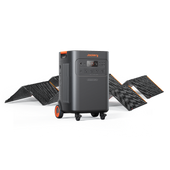











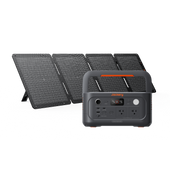



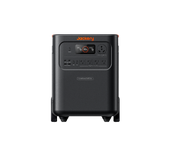
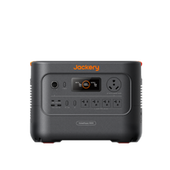





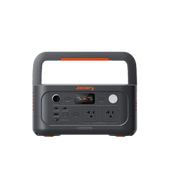





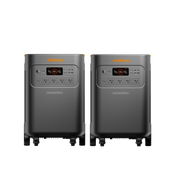
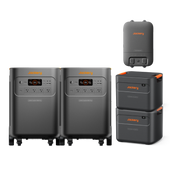





![[Add - on] Jackery Manual Transfer Switch for Explorer 5000 Plus - Jackery](http://www.jackery.com/cdn/shop/files/add-on-jackery-manual-transfer-switch-for-explorer-5000-plus-9017324.png?v=1754016782&width=170)
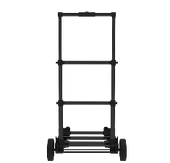
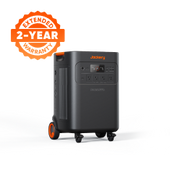
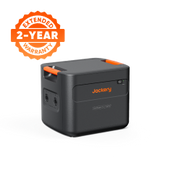
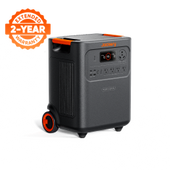
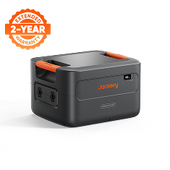
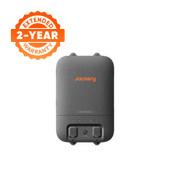



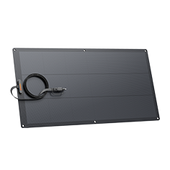
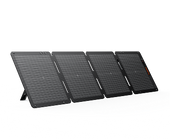




















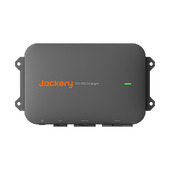




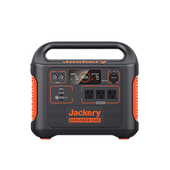






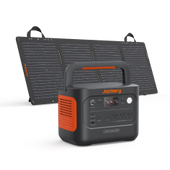
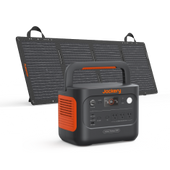






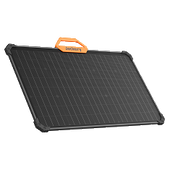


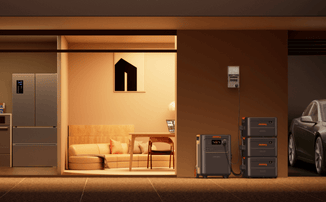














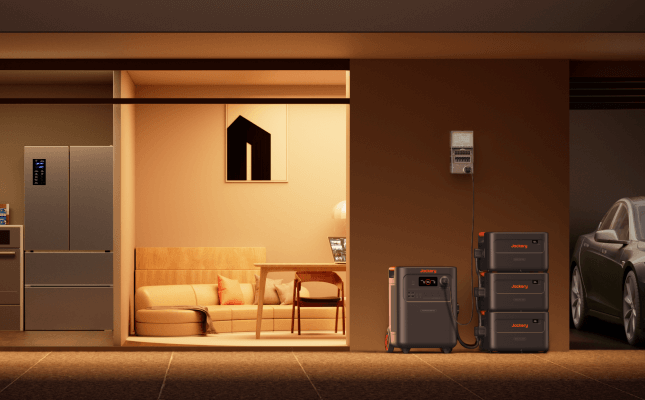




















Question: There is substantial difference in the angle between methods 1 and 2. Here in Albuquerque, NM (about 35° ), the winter variable is 50° vs 60°; summer 8° vs 20°. How much effect do those variables have on the output? Is there a preference of one calculation over the other?
Thanks.
I would love to try out the jackery two thousand plus with the extended matters
Leave a comment